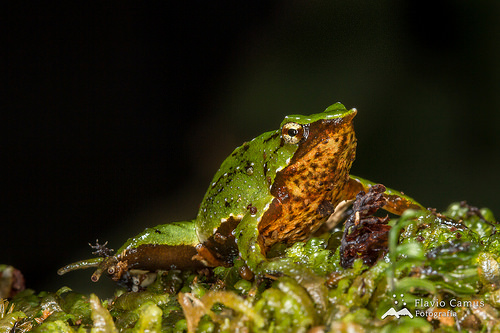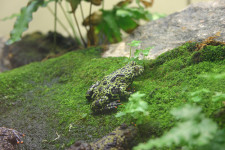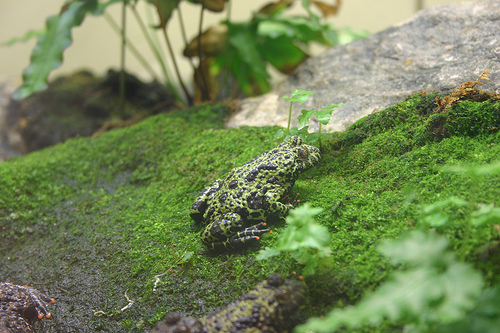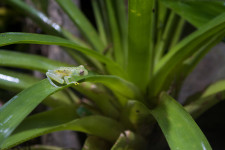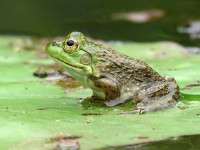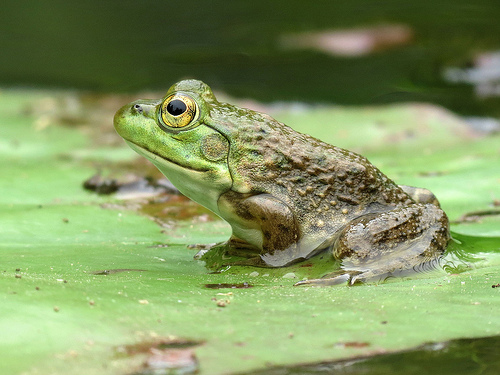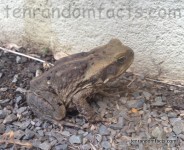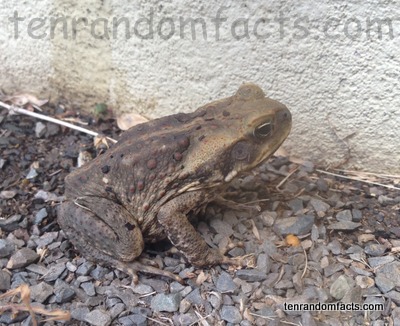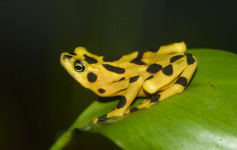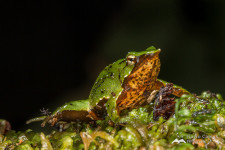
Out of the mouths of Darwin’s frogs come babes.
- Darwin’s frogs are a species of frog, native to South America’s Argentina and Chile.
- Darwin’s frogs are also known by the names ‘Darwin’s toads’ and ‘southern Darwin’s frogs’, and their common names are reference to Charles Darwin who discovered the frogs in the 1830s.
- The scientific name of a Darwin’s frog is Rhinoderma darwinii and it is one of two species in the family Rhinodermatidae, the family of the same name.
- Darwin’s frogs grow to be around 2.2 to 3.5 centimetres (0.9 to 1.4 inches) in length and weigh 2 to 5 grams (0.07 to 0.17 ounces).
- The skin of Darwin’s frogs is somewhat smooth and is usually coloured brown to green on the back, and a combination of black and white on the underside.
A Darwin’s Frog
Image courtesy of Flavio Camus/Flickr
- Darwin’s frogs are typically found among dead leaves in grassy or forest habitats, featuring streams or other smaller water bodies.
- The diet of Darwin’s frogs consists primarily of insects as well as invertebrates like spiders, snails and worms, which it typically lays in wait for.
- A Darwin’s frog has a pointed head and the frog utilises camouflage to evade predators, taking the appearance of a dead leaf when still.
- Female Darwin’s frogs lay 30 to 40 eggs among decomposing vegetation on the forest floor, while the males keep watch over the eggs for around three weeks, and then collect them in their mouth and store up to 19 of them in their vocal sac, where they mature into tadpoles and then young frogs before being released from the adult male’s mouth after approximately six weeks.
- Due to habitat loss and possibly disease, Darwin’s frogs are listed as vulnerable, with their population dwindling at a moderate rate.
Bibliography:
Darwin‘s Frog, 2016, A-Z Animals, http://a-z-animals.com/animals/darwins-frog/
Darwin’s Frog, 2016, Wikipedia, https://en.wikipedia.org/wiki/Darwin%27s_frog
Darwin‘s Frog (Rhinoderma darwinii), n.d, Arkive, http://www.arkive.org/darwins-frog/rhinoderma-darwinii/
Linsted M, Rhinoderma Darwinii, 2000, Animal Diversity Web, http://animaldiversity.org/accounts/Rhinoderma_darwinii/
Rhinoderma Darwinii, 2016, IUCN Red List of Threatened Species, http://www.iucnredlist.org/details/19513/0




